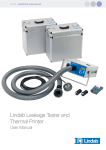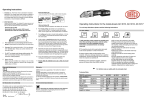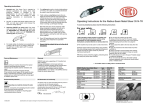Download SR Cutter User Manual
Transcript
lindab | we simplify construction SR Cutter User Manual Contents CE marking Technical data Presentation Preparations for cutting Instructions for cutting Instructions for making notches Instructions for moving the bench Problem solving Spare parts Contact 2 3 4 5 8 11 12 13 15 18 SR Cutter 103427 Declaration of conformity Lindab hereby declares under sole responsibility that this product complies with the following directives: 2006/42/EG, EMC 2006/95/EG. 103427 3 Wear ear defenders The noise level can vary when cutting the ducts, sometimes it exceeds 85 dB(A). Always wear ear defenders to protect yourself. 4 Make sure the stand is steady Never use the stand on uneven or unsteady surfaces. Make sure the legs are extended correctly and secured tightly before use. Kenneth Lennartsson CEO, Lindab Ventilation AB 5 Do not overload the stand Do not exceed the maximum workload. Do not climb, sit or stand on the stand. Safety instructions 6 Do not use in a humid environment Risk of electrical short circuit, use together with earth fault breaker. Read through the manual before you start using the SR Cutter. Keep the manual to hand so that everyone who uses the SR Cutter has access to the manual. 1 Wear protective goggles Risk of chips from the nibbling machine. Risk when cutting the duct's needle. 2 Use protective gloves Risk of cut injury when handling the duct. 2 7 Protect the electric cable Risk of damage to the cable from sharp plate edges. 8 Assembly and disassembly Use the handle to make assembly easier. 9 Moving The SR Cutter must be moved on its own wheels. Avoid heavy loads. Technical data Bench – collapsed Length Width Height 1645 470 350 mm mm mm Length 1880 Length (with extended telescope arm) 3140 Width 630 Height 1180 mm mm mm mm Maximum permitted load Weight kg kg Part name Part nr SRCS2 3000 103 427 SRCS2 3000 US 103 428 Bench – erected 75,0 23,0 Accessories Shears Model Power Voltage Stroke frequency Weight 3514-7R 500 230 2400 2,2 CSS EU 230 226 607 W V /min kg CSS UK 110 226 609 CSS CH 230 226 608 CSS US 110 100 886 200 0,35 mm kg NCP 226 618 CSCP 40 100 754 CSCP 60 100 755 CSCPS 2 103 430 Needle plier Lenght Weight Click plier, small (Ø 80-224) Length Weight 290 1,0 mm kg Click plier, large (Ø 250-315) Length Weight 290 1,1 mm kg 210 0,6 mm kg Arm for click plier Lenght Weight 3 Presentation Knife arm Slidable duct support Handle Stand Knife protection Arm for click pliers Knife Click pliers Setting block Fixed duct support Foldable legs Arm for shears Stopper Adjustable feet Shears Telescopic arm Lift handle Transport wheels Foldable legs Adjustable feet With this workbench you can cut ducts of 80-315 mm diameters and lengths of 200 mm and upwards. The bench is equipped with: • Wheels and foldable legs so you can easily move it to wherever you are currently installing ducts. • Scale for setting the desired duct length. • Knife to make a hole for the shears. Accessories: • Shears to cut the duct. • Pliers to cut the inner and outer needle. • Arm for attaching click pliers. • Pliers to make the notches. 4 Preparations for cutting Fold out the bench 1. Lift the bench opposite the wheel side. 2. Press in the buttons and turn out the legs until the buttons have snapped into the correct position for unfolded legs. 3. Lift the bench by the handle on the wheel side. 4. Press in the buttons and turn out the legs until the buttons have snapped into the correct position for unfolded legs. Erect the stand 1. Loosen the locking handle on the stand. 2. Move the stand to its vertical position. 3. Tighten the locking handle. 5 Mount the shears 1. Turn the split pin so that it is possible to mount the shears onto the arm. 2. Mount the shears and fold back the split pin so that the pin locks. Mount the arm for click pliers 1. Remove the plastic caps from the setting block. 6 2. Mount the arm so that the pins fits into the holes on the setting block. 3. Tighten the screw. Instructions for cutting Set the desired duct length Set the desired duct length, 200–1500 mm: 1. Loosen the telescopic arm's locking handle. 2. Set the desired duct length on the scale on the telescopic arm. 3. Tighten the locking handle. Set the desired duct length, 1500 mm and longer: 1. Measure how long the duct is that you want to cut. 2. Subtract the length you want your duct to be and the width of the knife (7 mm). 3. Set the result on the scale. Ex. You measure the duct you have to 2500 mm. You want a duct that is 2000 mm. Set the scale to 493 mm (2500 - 2000 - 7 = 493). Position the duct 1. Turn the duct so that the opening of the fold is facing you. 2. Place the duct on the bench. 3. Push the end of the duct towards the stopper on the telescopic arm. 4. Adjust the slidable duct support so it is as close as possible to the duct end. 7 Adjust the knife arm so that it matches the duct's diameter 1. Loosen the locking handle on the setting block. 2. Move the block so that top of the block is at the mark of the duct's diameter. 3. Tighten the locking handle. Make a hole with the knife Scratch a line with the knife 1. While moving the arm downwards turn the handle so that the knife protection is retracted 2. Rotate the duct so the knife hits the duct a bit "before" the duct's spiral fold. 3. Hold the duct with one hand. 4. Press the knife arm firmly downwards until the knife arm touches the duct. 1. Scratch a thin line with the point of the knife around the duct. The easiest way to do this is turning the duct away from you. 2. Use the scratched line as a guide to cut straight. 8 Cutting the duct with the shears Cutting the needle 1. Start the shears. 2. Insert the shears' cutting tooth into the hole. 3. Turn the duct almost one full turn towards you. Make sure the scratched line is in the centre of the strip that is cut off. 4. Do not turn the last bit but hold the duct still and lead the shears forward instead. When cutting the needle Lindab recommends that you use the needle plier, NCP Lindab recommends to cut the outer needle from Ø 100 and upwards and to cut the inner needle from Ø 315 and upwards. 9 Making notches The correct click pliers Use the correct click plier to get the notches at right distance from the ducts end. Use the 40-pliers for Ø 80–224 (Ø 3"-9"). Use the 60-pliers for Ø 250–315 (Ø 10"-12"). Making notches For the recommended number of notches, see "Assembly Instructions Lindab Safe and Lindab Safe Click". 1. Insert the opening of the pliers over the duct end as far as it can reach. 2. Keep in place by holding the duct with your other hand. 10 3. Press the handles fully together. 4. To control the notch, see the instructions for "Checking the notch". 5. Place the notches evenly around the circumference. You can easily loosen the pliers from the arm for separate use. Moving the bench 1. Push in the telescopic arm and lock the handle. 2. Move the slidable duct support as close to the fixed as possible. 3. Lower the knife arm. 4. Hold onto the handle and turn in the legs on the wheel side. 5. Move the bench as shown in the picture. Fold the bench as small as it will go e.g. for stowing in a car 1. Move the setting block so that the top of the block is above the 250 mark. 2. Move the knife arm to its vertical position. 3. Move the the stand to its horizontal position. 4. Move the click plier so that it is positioned horizontally above the bench between the slidable and the fixed duct support. 5. Remove the shears. 6. Turn the legs in. 11 Problem solving Problem The knife is difficult to press through the duct. The cutting tooth of the shears cannot enter the knife hole. The duct is difficult to cut with the shears. The fold is difficult to cut with the shears. The duct was not cut off properly and has a nick. 12 Cause Solution The knife is blunt. Remove and sharpen the knife or replace it with a new one. The knife arm is set at an incorrect height. Move the setting block so that the mark above the block is the same as the diameter of the duct. The tooth does not hit the hole. Check that the edge of the knife touches the centre of the shears' tooth. The hole is too small. The knife arm was not pressed all the way down to the duct when the hole was made. Press the arm all the way down to the duct. The hole is too small. The knife arm is set at an incorrect height. Move the setting block so that the mark above the block is the same as the diameter of the duct. The shears are blunt. Remove the cutting tooth of the shears and replace it with a new one. (After very heavy wear the side cutter may also need to be replaced.) See the chapter on spare parts. The opening of the fold is turned away from the shears. Turn the duct so that the opening of the fold is facing the shears. The knife hole was made in the wrong place. Make the knife hole in the place, i.e. just before the fold. The shears are blunt. Remove the cutting tooth of the shears and replace it with a new one. (After very heavy wear the side cutter may also need to be replaced.) See the chapter on spare parts. The wrong work method is being used. Press the shears forward a bit harder but make sure you work them upwards and downwards. The bearing pivots points for the shears or knife are too loose. Check that the edge of the knife touches the centre of the shears' tooth. Before cutting, scratch a thin line with the point of the knife around The shears were forced to the the duct. Make sure the scratched left or right during cutting. line is in the centre of the strip that is cut off. Problem The cut duct is the wrong length. The click pliers make holes in the duct. The click pliers make a faint notch. The click plier makes dents in the duct next to the notch. Cause Solution The scale is set to an incorrect length. Set correct length on the scale. During cutting, the duct was not pressed close enough to the stopper at the end of the telescopic arm. Press the duct close to the stopper. The fixed duct support has come loose from the bench. Fix the support with its two tightening screws. Make sure that the free distance between the closest edge of the shears' cutting tooth corresponds with the marking on the scale. The pliers' stop screw has been screwed in too far. Unscrew the stop screw slightly. Check how the notch looks, see instructions for "Checking the notch". The pliers' stop screw has been unscrewed too far. Screw the stop screw in slightly. Check how the notch looks, see instructions for "Checking the notch". The pliers' stop screw needs adjusting due to the sheet metals thickness or quality. Adjust the stop screw. Check how the notch looks, see instructions for "Checking the notch". 13 Bench (SR Cutter) Bench SRCS2 3000 103 427 SRCS2 3000 US 103 428 Spare parts Roller (100) + bushings Roller (250) + bushings Bushings, 2 pcs CSPR2 100 CSPR2 250 CSPRB2 103 493 103 494 Arm for click plier Pin for Dräco Knife blade CSCPS2 CSSAA2 CSKE2 103 430 Foot for leg SRCSF2 14 103 497 103 498 103 495 103 496 Knife protection Knife arm + tension block CSKP2 SRCKA2 112 787 115 699 Shears (Dräco 3514-7R) Shears 3514-7R CSS EU 230 226 607 CSS UK 110 226 609 CSS CH 230 226 608 CSS US 110 100 886 Spare parts Shears cutting tooth 37140 Pin set for shears cutting tooth 37140 Shim set for shears cutting tooth 37140 CSSK CSSKPS CSSSSS 226 611 100 146 Side cutting edges for shears Screw and pin set SJS SSPS 226 623 100 147 100 148 15 Click pliers Click pliers CSCP 40 100 754 CSCP 60 100 755 Spare parts Gauge CSNC 16 100 096 Contact Belgium Lindab N.V. ( +32 9 385 5011 www.lindab.be Poland Lindab SP. z o.o. ( +48 22 489 88 00 www.lindab.pl Czech Republic Lindab s.r.o. ( +420 233 107 100 Romania Lindab SRL ( +40 21 2094 100 www.lindab.ro Denmark Lindab A/S ( +45 73 232323 www.lindab.dk Estonia Lindab AS ( +372 6348200 www.lindab.ee Finland Oy Lindab Ab ( +358 9 2534 4500 www.lindab.fi France Lindab S.A ( +33 4 78 06 36 41 www.lindab.fr Germany Lindab GmbH ( +49 4532 2859-0 www.lindab.de Hungary Lindab Kft. ( +36 23 531 100 www.lindab.hu Russia OOO Lindab ( +7 812 360 53 60 www.lindab.ru Switzerland Lindab AG ( +41 58 800 31 00 www.lindab.ch Sweden Lindab Sverige AB ( +46 431 850 00 www.lindab.se UK Lindab Ltd ( +44 1604 788 350 www.lindab.co.uk USA Lindab Inc. ( +1 757 488 1144 www.lindabusa.com Ireland Lindab (Irl) Ltd ( +353 1 456 8200 www.lindab.ie Italy Lindab S.r.l ( +39 011 99 520 99 www.lindab.it Latvia Lindab SIA ( +371 780 43 71 www.lindab.com Lithuania Lindab UAB ( +370 52 729 729 www.lindab.com Norway Lindab A/S ( +47 22 80 39 00 www.lindab.no 17 18 19 1077 EN 2013-05-31




















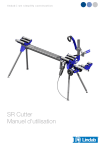
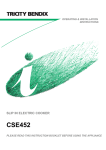
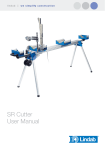
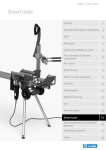
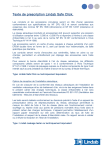


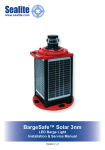
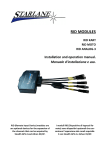
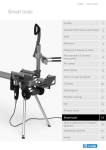

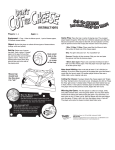
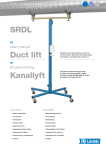
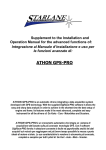
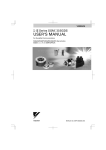
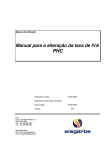
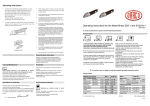
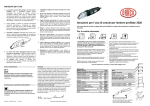
![Installation Manual [PDF 4.6 MB]](http://vs1.manualzilla.com/store/data/006008736_1-137b4e33f3bd3f098e11b56c54272240-150x150.png)
